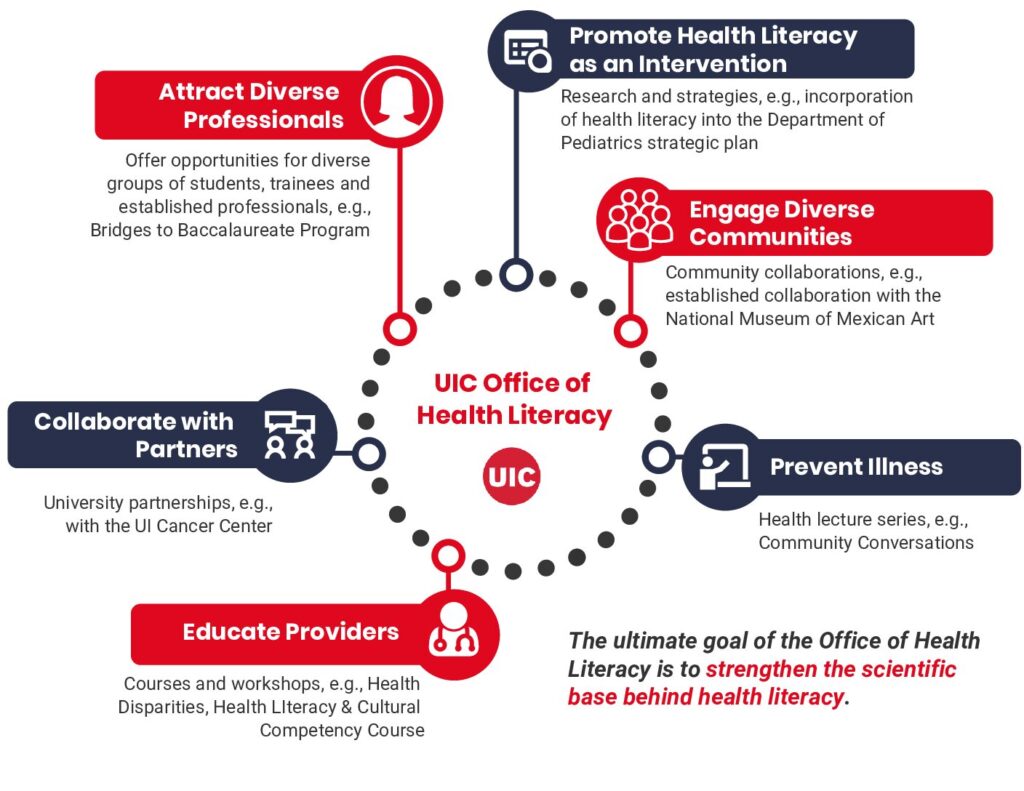About the Office of Health Literacy
Overview Heading link

Develop formal and informal partnerships with Community-based healthcare providers and relevant entities
We work with UIC’s health science colleges, Vice Chancellor for Health Affairs, Urban Health Program, Mile Square Health Center, Department of Medicine Urban Global Health Program, and Office of Community Engagement and Neighborhood Health Partnerships.
Share evidence-based health literacy knowledge and educate students and healthcare professionals.
- We create the Department of Medicine Health Literacy Lecture Series
- We engage with the Department of Medicine, Diversity, Equity, and Inclusion Task Force efforts to foster recruitment and career development of faculty and healthcare workers.
Highlight disparities and raise awareness
During the COVID-19 Pandemic, the CDC and HHS declared health literacy a national public health problem. This office works to highlight the disparities revealed during the Pandemic and raise awareness of health disparities fueled by poor rates of health literacy.
Areas of Focus Heading link
- Sharing innovations and technological approaches that promote health literacy and illness management.
- Addressing multiple health and disease types including but not limited to diabetes, cancer, heart and liver failure, HIV/AIDS, hypertension, gastroenterology, obesity, asthma and genetics.
- Collaborating on research with local, state, federal, global, and non-governmental partners and working with venues to translate practices that evolve from research.
- Participating in, supporting, and convening interdisciplinary health interest groups to examine healthcare literacy, prevention, and community engagement in economically challenged ethnic/racial communities.
Why This Work is Important Heading link
-
Health Literacy Scores for U.S. Adults Only 12% scored in the highest health literacy level.
What the scores mean Heading link
| Health Literacy Level | Task Example | % of U.S. Adults Attaining this Score |
|---|---|---|
| Proficient | Using a table, calculate an employee's share of health insurance costs for a year. | 12% |
| Intermediate | Read instructions on a prescription label, and determine what time a person can take a medication. | 54% |
| Basic | Read a pamphlet and give two reasons why a person with no symptoms should be tested for a disease. | 21% |
| Below Basic | Read a short set of instructions and identify if it is permissible to drink/eat before a medical test | 14% |
Meet our Director Heading link

